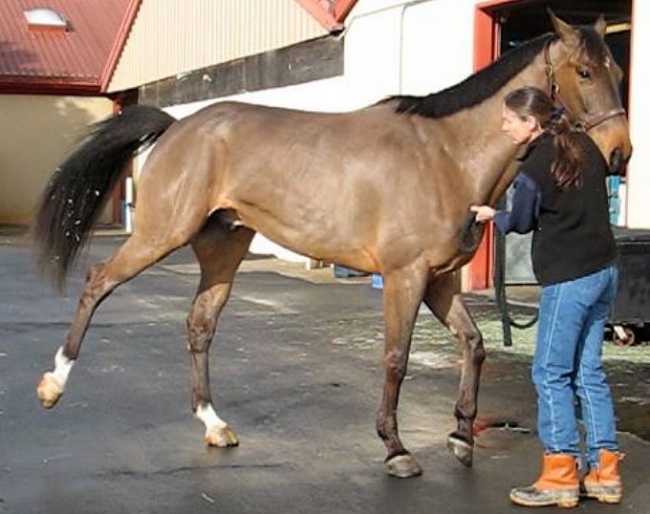
-- as reported in the WBFSH State of the Industry Report 2023
Shivers is a gradually progressive, chronic neuromuscular disease in horses that is characterized by gait abnormalities when backing up.
Shivers
There have been several studies conducted on shivers in horses in order to better understand the condition and develop effective treatment options. Some studies have focused on identifying potential genetic or environmental risk factors for the development of shivers. Other studies have investigated the use of various medications and surgical techniques for managing the condition.
Typical Signs
Typical signs of shivers include muscle tremors, trembling of thigh muscles and a flexed and trembling hind limb, difficulty picking up and holding up hind limbs, trembling of the tail while held erect.
There can be an abnormal pattern of pelvic limb movement present during specific movement phases that are apparently not the result of pain, weakness, or proprioceptive deficits.
Clinical presentation
Shivers is defined by the presence of a pelvic limb moving pattern that becomes apparent when these horses are moving backward. The abnormal pelvic limb movement also occurs when the horse is asked to manually lift the pelvic limb and, in advanced cases, is present when horses initiate walking forward or turn sharply. The disorder is a gradually progressive chronic movement. Clinical signs usually become evident by 7 years of age and as early as 1-2yrs of age in draught horses. Commonly seen in male horses of warmblood, thoroughbred and draught breeds that are on average 17 hands tall and more but can affect other breeds. Shivering, unlike Stringhalt, is rare at a walk and inapparent at the trot and canter.
There is no evidential link of shivers with PSSM.
Pathology
With shivers, the sole pathological finding is a selective distal atonal degeneration in the cerebella Purkinje cells within the deep cerebella nuclei8 . There appeared to be a reduction in the number of end-terminal synapses within the deep cerebella nuclei and degeneration being most evident in the lateral nuclei. There are arguments against a cerebellar origin with a lack of ataxia, a prominent feature of diffuse cerebellar disease . A selective distal atonal degeneration in cerebellar Purkinje cells is seen as the sole pathological finding of shivers.
Genetic Base
There is evidence for and against a genetic predisposition for Shivers. Draper et al. 2015 indicate a genetic base due to the strong breed predilection, with largely draught, warmblood and thoroughbred breeds being affected. A genetic basis for shivering in tall breeds could explain the significantly taller height of affected horses vs control horses . The evidence of the disease onset at such a young age could support a genetic basis for shivering. Over 40% of horses confirmed shivering, developed signs between 2 and 4 yrs of age and a majority had an age at onset of 5- 7yrs . Contradictory, within the same article there is also evidence against a genetic basis as the primary influence of height could influence the breeds affected.
Currently, there is no firm data to support or disprove a genetic basis for shivering.
Treatment
To date there is no proven effective treatment for shivers.
Source: WBFSH State of the Industry Report 2023
Related Links
Shivers: Disease, Diagnosis, Treatment and is it Hereditary?
Windeler Denies Don Martillo's Suspected Diagnosis of Shivers
Isabell Werth Suspended - Whisper Tested Positive for Doping